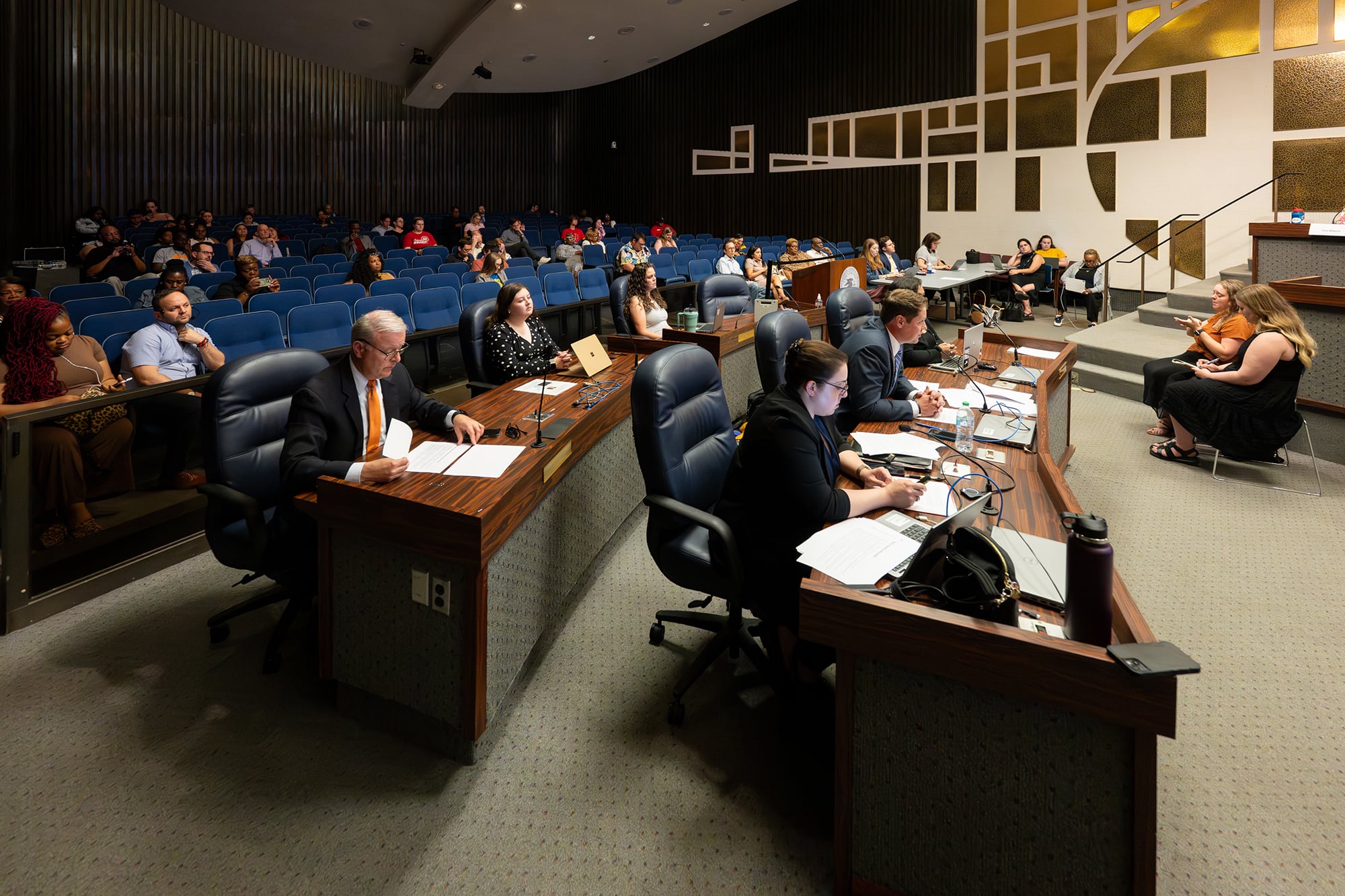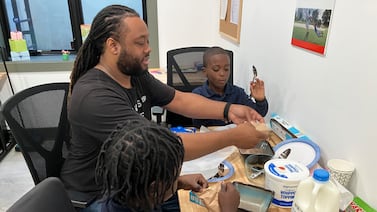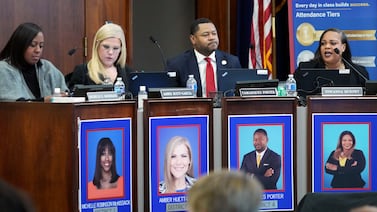Sign up for Chalkbeat Indiana’s free daily newsletter to keep up with Indianapolis Public Schools, Marion County’s township districts, and statewide education news.
Community members urged the Indianapolis Local Education Alliance to share data on school facilities as the state-mandated alliance pondered questions surrounding building capacity and efficiency on Wednesday.
The 103 public schools within the borders of Indianapolis Public Schools operate with a variety of different building arrangements that pose a complex challenge for the state-mandated group tasked with solving for inefficiencies across IPS and the charter sector.
Some charters that are part of the IPS Innovation Network of autonomous schools operate in IPS buildings at no cost — an in-kind service that, combined with security services, the district estimated at $38 million in 2023-24, according to a report compiled by the mayor’s Office of Education Innovation. Other charters lease space, while others are co-located with another public school. Some charters have purchased their buildings, with remaining long-term debt ranging up to $22.9 million across multiple schools in the same charter network.
The findings on facility challenges for charter schools, laid out in a report submitted to the Indianapolis Local Education Alliance this week, will guide the ILEA as it considers recommendations to make to state lawmakers about the future of the city’s public schools.
At the meeting Wednesday, the group heard from IPS and charter partners about building usage as members questioned how to maximize efficiency.
Former mayor Bart Peterson, a member of the alliance, said the group must decide how to proceed with a shrinking pot of public funding.
“We are going to have to ... place efficiency pretty high on the priority list, given the environment that every public school in Marion County is going to be facing,” he said.
In public comment at the meeting, education advocates affiliated with Stand for Children Indiana — a nonprofit that has been supportive of charter schools — delivered a plan that calls for a data-driven accountability framework for all schools and the unification of all public schools under one governing board with both elected and appointed members.
“If we want to eliminate barriers, we can’t keep dividing students into separate systems,” Bony Georges, an IPS teacher who worked on the proposed plan, told the group. “The debate over charter versus traditional schools is the wrong debate. We need one public education system in Indianapolis that works for every child in every neighborhood.”
Parents affiliated with the IPS Parent Council, which has advocated strongly for traditional IPS schools, reaffirmed their call for a moratorium on new schools through 2035.
“The current system of competition and choice in schooling damages the fabric of our communities, creating a devastating dynamic where parents are pitted against each other, scrambling for increasingly scarce resources rather than uniting for a common good,” parent Katherine Harkov told the group.
With facility challenges for charters, facility costs vary
The city’s Innovation Network model and its embrace of school choice has produced a variety of different building arrangements and capacities. The OEI report included building arrangements as well as enrollment and capacity figures for charter schools.
Of the district’s 30 Innovation schools, 13 are in an IPS building, with and two are co-located in an existing IPS school, Deputy Superintendent Andrew Strope told the group Wednesday.
But beyond its partnerships with IPS, charters face a daunting challenge in trying to acquire buildings.
Different building arrangements have pros and cons, according to the OEI report. Ownership providers long-term stability, but limited access to revenue sources such as property taxes can lead to higher borrowing costs.
While leasing offers lower initial costs, it can lead to higher long-term expenditures, according to the report. And while schools operating in IPS buildings can benefit from reduced upfront costs, they have less autonomy over the buildings and less long-term security if the district does not renew legal contracts with the charter.
Charter schools that occupy IPS buildings as part of the district’s Innovation Network of autonomous schools do so at no cost. But among Innovation charters, they bore the highest average building cost per pupil at $4,476 in 2023-24, according to the OEI report.
Charters that leased their own buildings had a higher average per-pupil facility cost than those that owned them, paying $3,619 per student compared to $1,672.
Independent charters posted a lower average per-pupil building cost, with those leasing buildings paying $1,157 per student and those that owned buildings at $1,047.
Charter schools provided Enroll Indy, the city’s centralized enrollment system, with a program capacity of roughly 25,000 total seats for the 2024-25 school year, according to the report. They enrolled roughly 22,000 students.
Superintendent Aleesia Johnson said she hopes the ILEA recommends the repeal of the state law that requires the district to sell unused school buildings to charter schools for $1. That law only holds traditional public schools accountable for utilization rates, she said, and does not consider utilization rates for charters.
Johnson said the group must consider whether it recommends all schools operate in a way that maximizes resources — such as facility space — or whether it recommends giving schools flexibility that may let them operate in a building that is bigger than needed.
“We have to be clear on what is it that we desire to be true,” Johnson said. “That will drive how we come up with our solutions.”
Amelia Pak-Harvey covers Indianapolis and Lawrence Township schools for Chalkbeat Indiana. Contact Amelia at apak-harvey@chalkbeat.org.







